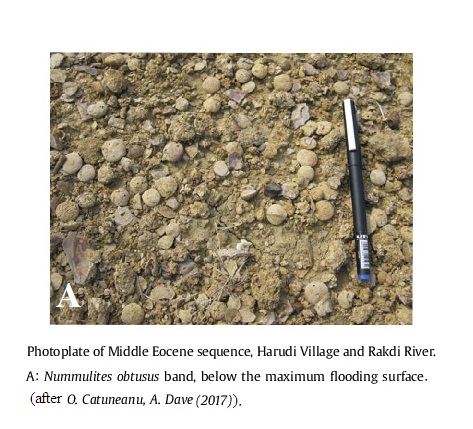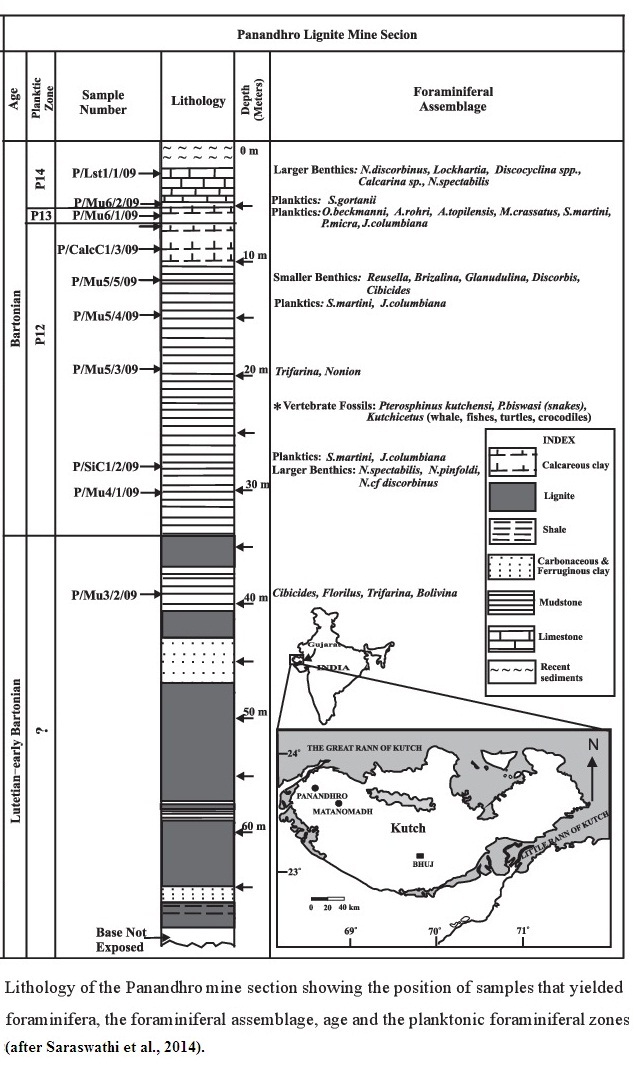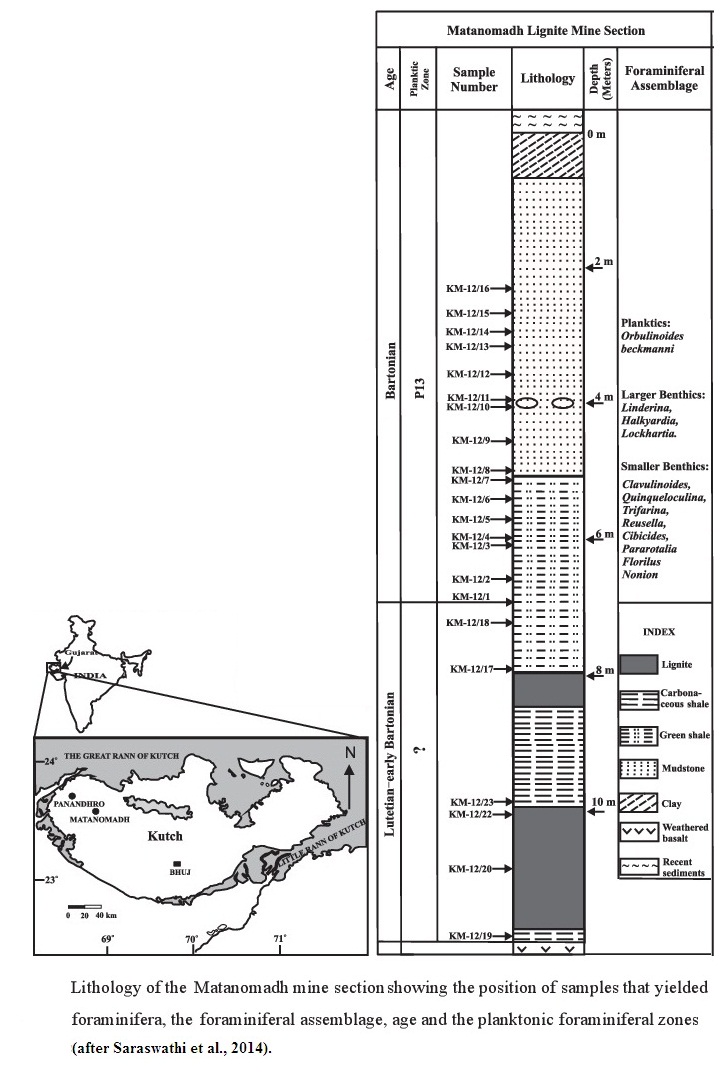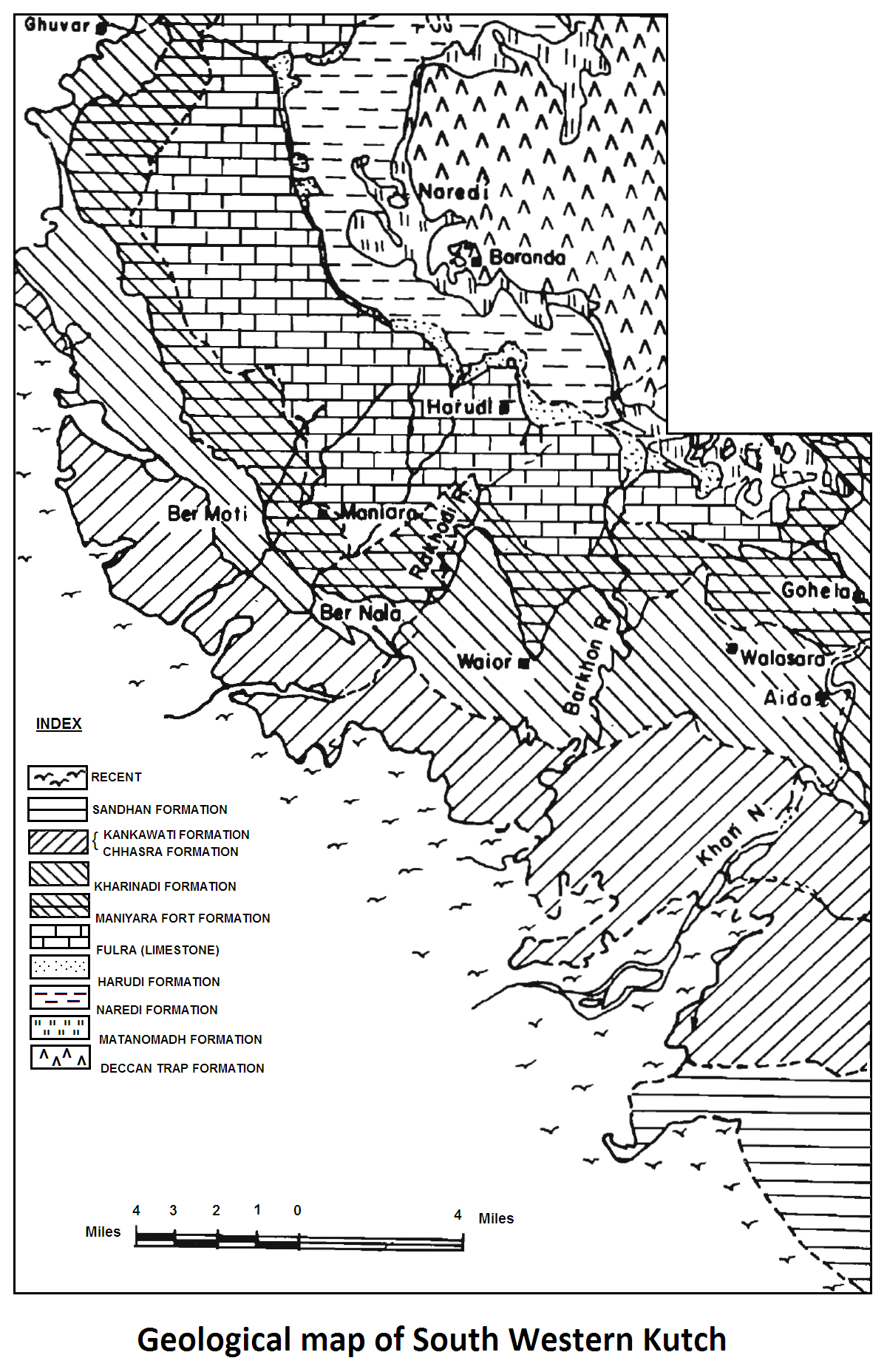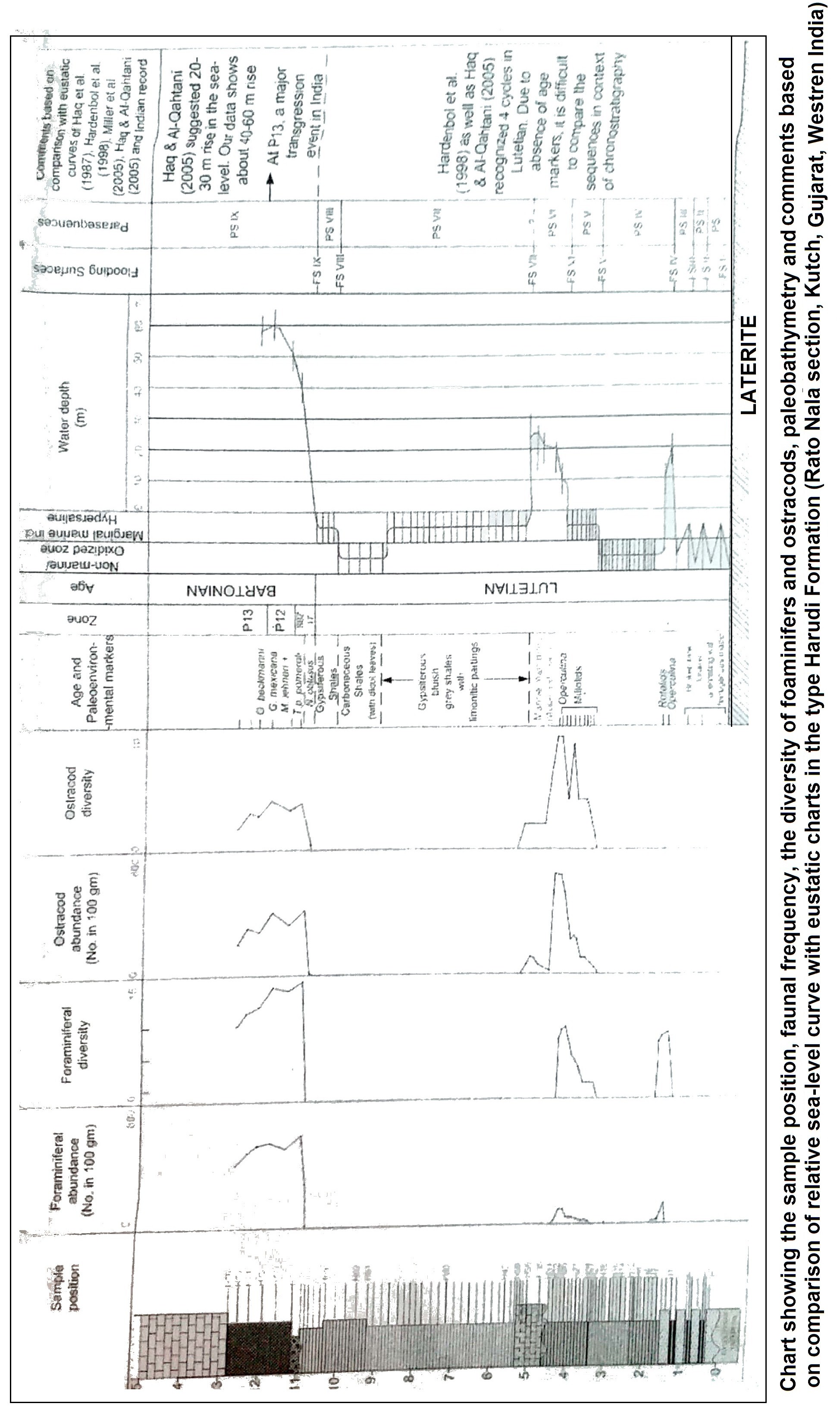Harudi Fm
Type Locality and Naming
OUTCROP. Named after Harudi village. [Original Publication: Biswas, S.K. and Raju, D.S.N. (1971) Note on the rock stratigraphic classification of the Tertiary sediments of Kutch Quart. Jour. Geol. Min. Met. Soc. India.]
Synonyms: This formation has earlier been named variously like Nummulitic Group (Wynne, 1872); Kirthar Series (Sen Gupta, 1964; Poddar, 1959; Tewari, 1957). A thick sequence of bedded white foraminiferal limestone overlying the argillaceous formation forms a very distinct lithounit in the Tertiary succession of Kutch.
Lithology and Thickness
Continental marl. Consists of splintery shale with yellow limonitic partings in the lower part and calcareous claystone and siltstone with occasional layers of gypsum and carbonaceous shale in the upper part. A 0.76 m thick ferruginous, gypsum-rich clayey marlite with large diameter (1 to 2 cm) Nummulites obtusus is characteristic marker bed within the formation. The bed is extensive. [Figure 1: Photoplate of Middle Eocene sequence, Harudi Village (after O. catuneanu, A. Dave (2017)]
[Figure 2: Lithology of the Panandhro mine section showing the position of samples that yielded foraminifera, the foraminiferal assemblage, age, and the planktic foraminiferal zones (after Saraswati et al., 2014)]
[Figure 3: Lithology of the Matanomadh mine section showing the position of samples that yielded foraminifera, the foraminiferal assemblage, age and the planktonic foraminiferal zones (after Saraswati et al., 2014)]
[Figure 4: Geological Map of South Western Kutch (after Biswas and Raju, 1973)]
[Figure 5: Chart showing the sample position, faunal frequency, the diversity of foraminfers and ostracods, paleobathymetry and comments based on comparison of relative sea-level curve with eustatic charts in the type Harudi Formation.
Relationships and Distribution
Lower contact
Upper contact
Conformably overlain by the Fulra Limestone Fm. Contact is placed at the base of lowest massive foraminiferal limestone bed containing characteristic saddled to undulated Discocyclina, D. sowerby.
Regional extent
GeoJSON
Fossils
Planktonic foraminifera: Truncorotaloides toilensis, Oubulinoides beckmanni, Turborotalia frontosa, Nummulites obtusus, N. acutus. Nannofossils are Brarrudosphaera biglowi, Discoaster barbadiensis, Bilies. Invertebrates: Xomcus, Porocidaris and Cidaris.
Age
Depositional setting
Littoral to lagoonal in the lower part, and inner to lower part of middle shelf. Cyclical, transgressive phase of deposition. A sharp rise of paleobathymetry by an order of 40-50m immediately above the obtusus beds.
Additional Information
Refer figure for sea-level changes.

